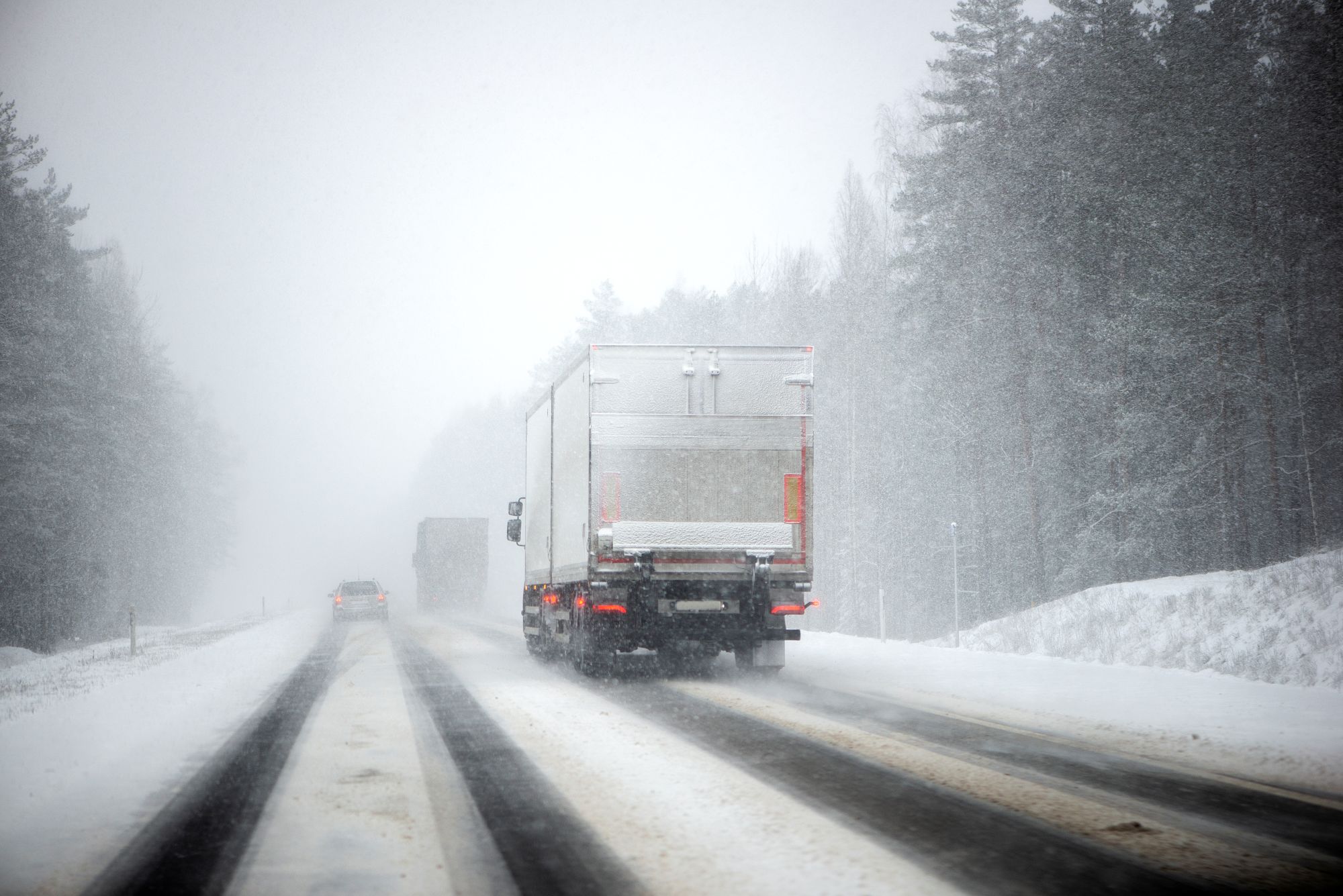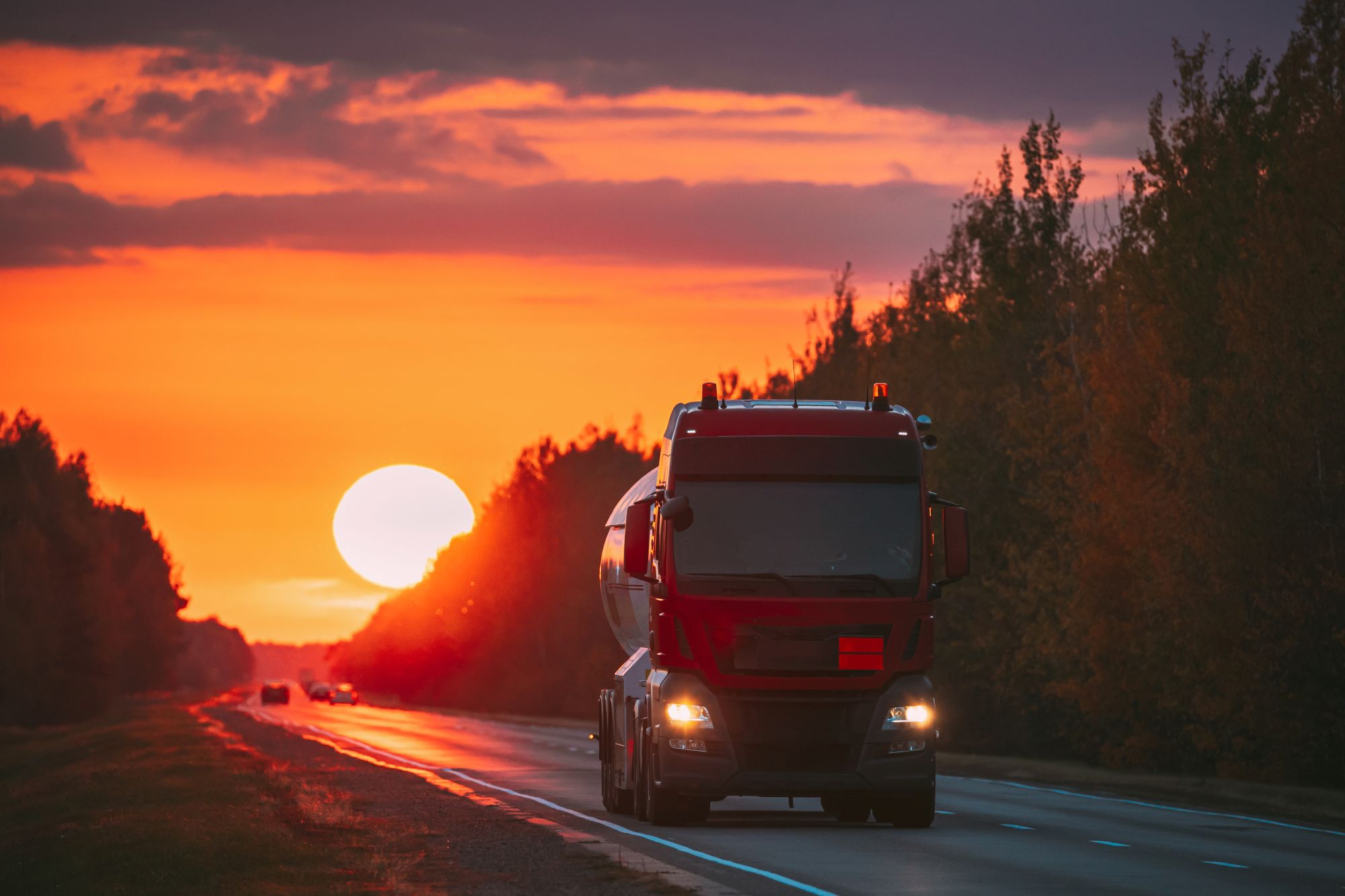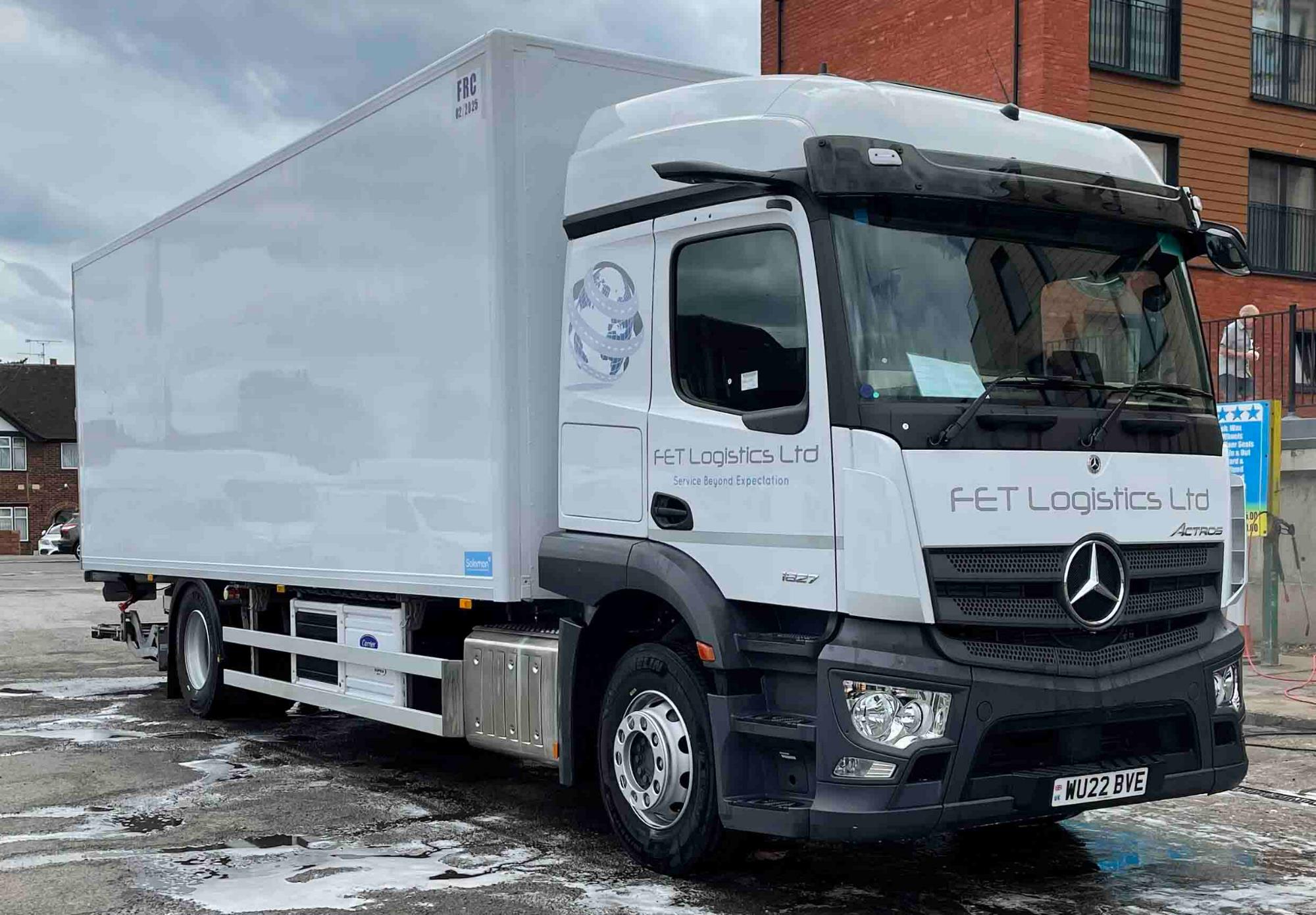
Guest
Predpisi za zimsko vožnjo v Združenem kraljestvu in EU: Kaj morajo vedeti upravljavci voznih parkov
Ustvarjeno: 27. 10. 2025
•
Posodobljeno: 27. 10. 2025
Ob nižjih temperaturah evropske ceste zahtevajo več kot le spretnost za volanom. Zahteva se pripravljenost, ozaveščenost in upoštevanje zapletenega spleta zimskih predpisov, ki se razlikujejo glede na državo. Za upravljavce voznih parkov, ki upravljajo tovorna in težka tovorna vozila v Združenem kraljestvu in EU, je razumevanje teh predpisov ključnega pomena, da se izognejo kaznim, zastojem ali še huje - nesrečam zaradi neustrezne priprave.
V tem članku so opisane ključne zahteve za zimski čas - od pnevmatik in pravil o vidljivosti do najnovejših predpisov o osvetlitvi, vetrobranskem steklu in hitrosti - ter pojasnjeno, kako lahko vozni parki ostanejo skladni in varni, kjerkoli na cesti.
Pnevmatike in verige
V večjem delu Evrope so se pnevmatike 3PMSF (Three-Peak Mountain Snowflake) začele uporabljati kot priznani standard za zimsko zmogljivost. Težka vozila s skupno maso nad 3,5 tone morajo imeti te pnevmatike nameščene na pogonski in krmilni osi v državah, kot so Nemčija, Švica in Švedska.
Čeprav pnevmatike 3PMSF zagotavljajo zanesljiv oprijem v hladnih ali zmerno zasneženih razmerah, ne morejo zakonsko nadomestiti snežnih verig, kadar to zahteva zakon ali prometni znak. Za vozne parke, ki vozijo na goratem terenu, je uporaba snežnih verig še vedno bistven del zimske pripravljenosti.
Pomembno je opozoriti, da se pnevmatike M+S (Mud and Snow) postopoma ukinjajo. V Nemčiji so bile pnevmatike M+S, izdelane pred 1. januarjem 2018, sprejete do 30. septembra 2024. Od oktobra 2024 so v zimskih razmerah dovoljene le pnevmatike z oznako Alpine (3PMSF). Pnevmatike M+S ostajajo zakonsko sprejete le kot prehodna oprema v nekaj južnih ali vzhodnih državah.
V Avstriji so zimske pnevmatike obvezne med 1. novembrom in 15. aprilom, z najmanjšo globino profila 5 mm (radialne) ali 6 mm (prečne) za težka tovorna vozila.
Francoski "zakon o gorah" (Loi Montagne II) uveljavlja zimsko opremo v alpskih in pirenejskih regijah od 1. novembra do 31. marca.
V Italiji je treba med 15. novembrom in 15. aprilom na označenih regionalnih in gorskih poteh uporabljati zimske pnevmatike ali snežne verige.
V nekaterih vzhodnih in balkanskih regijah, kot sta Romunija ter Bosna in Hercegovina, morajo imeti vozila, težja od 3,5 t, zaradi vleke in varnosti tudi lopato in pesek.
Najnovejša pravila in predpise najdete na vladnih spletnih straneh.
Standardi luči in vidljivosti
Od 1. januarja 2025 morajo novi polpriklopniki in težki priklopniki imeti izboljšano vidljivost. Polpriklopniki morajo biti opremljeni s stransko razsvetljavo, ki utripa sinhrono s smernimi kazalniki, da se izboljša stranska vidljivost.
Vozila, daljša od 6 metrov, morajo imeti bočne oznake nameščene v ustreznih razmikih, vozila, širša od 2,1 metra, pa morajo uporabljati konturno osvetlitev - neprekinjene bele in rdeče luči, ki ponoči obrisujejo obliko vozila, da sta njegova dolžina in širina jasno vidni drugim udeležencem v prometu.
Obvezna razsvetljava za težka tovorna vozila vključuje:
● Žarometi (kratke in dolge luči)
● Zadnje in zavorne luči na obeh straneh
● Zadnje luči za meglo
● Odsevniki in luči za vzvratno vožnjo
● Dnevne luči so od leta 2012 obvezne za tovornjake. Pravila uporabe se razlikujejo glede na državo.
Vozniki morajo pred vsako vožnjo poskrbeti, da so vse luči, odsevniki in registrske tablice čisti in brez snega; če tega ne storijo, lahko dobijo kazen ali kazenske točke.

Hitrost, vodljivost in pnevmatike s čepi
Omejitve hitrosti v zimskih razmerah se v EU razlikujejo, vendar je treba biti vedno previden.
● Avstrija omejuje hitrost vozil s pnevmatikami s kolki na 80 km/h zunaj naselja in 100 km/h na avtocestah ter zahteva vidno oznako "pnevmatike s kolki". Pnevmatike s čepi niso dovoljene za vozila z maso nad 3,5 t.
● V Nemčiji zakoni o "primerni hitrosti" pomenijo, da lahko prevelika hitrost na poledenelih cestah predstavlja prekršek v skladu z nemškimi predpisi o cestnem prometu, tudi če ne presega predpisanih omejitev.
Uporabljajo se lahko tudi prepovedi, ki so odvisne od vremena. V več alpskih in vzhodnih regijah se lahko tovornjaki vrnejo z gorskih prelazov ali izpostavljenih mostov, če hitrost vetra presega 100 km/h, ali pa se jim začasno prepove vožnja po poteh, kjer je črni led ali nevarnost plazov.
Vetrobranska stekla, ogledala in vid
Vidnost ni neobvezna - je zakonska zahteva. Vozniki morajo pred vožnjo odstraniti ves sneg in led z vetrobranskih stekel, ogledal, streh in luči. Nekatere države kaznujejo voznike, če sneg ali led s streh zdrsne v promet - kazni veljajo v Nemčiji, Švici, Avstriji in drugih državah.
Da bi vozni park izpolnjeval zahteve, mora:
● Vzdržujte delujoče brisalce in odpraševalnike.
● Uporabljajte zimsko tekočino za pralnike, testirano na -20 °C.
● Vsak dan preverite ogrevana ogledala.
● Poskrbite, da bo v vsaki kabini orodje za čiščenje snega (lopata, krtača in pesek).
Združeno kraljestvo proti EU
Čeprav zakonodaja Združenega kraljestva izrecno ne zahteva zimskih pnevmatik, so upravljavci zavezani k skrbnosti v skladu z Zakonom o zdravju in varnosti pri delu iz leta 1974 in Pravilnikom o cestnih vozilih (konstrukcija in uporaba). DVSA svetuje, da morajo pnevmatike ohranjati vsaj 1 mm globine profila za težka tovorna vozila. Če ne zagotovite, da so pnevmatike primerne razmeram, lahko pride do izvršilnega ukrepa zaradi nevarnega delovanja.
Za vozne parke, ki vstopajo v EU, se obveznosti preusmerijo na lokalne zakone o zimski pripravljenosti takoj, ko prečkajo mejo. Neupoštevanje predpisov lahko vodi do imobilizacije na cesti, glob ali zapletov z zavarovanjem v primeru nesreče.
Priprava voznega parka na zimo
Upravljavci voznega parka morajo uporabljati kontrolni seznam pripravljenosti na zimo, ki presega pnevmatike:
● Preverite predpise držav, skozi katere vozniki potujejo.
● Na krmilno in pogonsko os namestite pnevmatike z oznako 3PMSF
● Nosite odobrene snežne verige
● Očistite in preverite vse luči, odsevnike in podložke
● Zaloga kompletov za zimske razmere (prva pomoč, lopata, odsevni jopiči)
● Ponovno preučite načrtovanje poti za krajša okna z dnevno svetlobo
● Vsak dan preverite akumulatorje in lovilce vlage v zračni zavori.
● Preverite obrabo tesnil vrat in metlic brisalcev
● Načrtujte osvežitev znanja voznikov o zaviranju v hladnem vremenu, uravnavanju hitrosti in nameščanju verige.
Aplikacija intruck app podjetja SNAP omogoča dostop do rezerviranih, dobro osvetljenih in varnih parkirišč za tovornjake, kar je ključnega pomena za varnost čez noč med zimskimi motnjami. Vozniki lahko vnaprej poiščejo objekte in si tako zagotovijo topel počitek v skladu z omejitvami ur vožnje.
Ohranjanje varnosti in skladnosti
V Združenem kraljestvu in EU zima ne prinaša le snega, temveč tudi večjo pozornost na skladnost. Vozni parki morajo biti pozorni na lokalne razlike, ki se lahko spremenijo znotraj meja ali gorskih verig, od pnevmatik 3PMSF in prevoza snežnih verig do standardov za osvetlitev, hitrost in vidljivost.
S strukturiranimi pregledi voznega parka, spremljanjem najnovejših informacij Evropske komisije in DVSA ter opremljanjem vozil za vse pogoje lahko upravljavci zaščitijo svoje voznike in dobave v najhujši sezoni.
SNAP sodeluje z voznimi parki, da bi jim to olajšal - voznike povezuje z zanesljivimi počivališči, varnimi parkirišči in orodji za zagotavljanje skladnosti, ki zagotavljajo varno gibanje tovornega prometa vse do zime 2025. [Več informacij še danes.] (https://snapacc.com/fleet-operators/)



